The Consensus Audio Conspiracy Loudspeaker
| A Reference by Any Measure |
|
|
|
October 2006 |
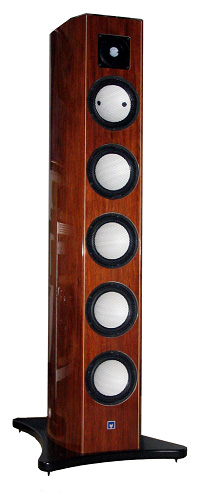 Based in Austria, Consensus Audio Engineering (CAE) was founded by dedicated music enthusiasts who always have been part of the international high-end scene, manufacturing reference loudspeakers to the highest standards for renowned brands that I legally cannot list here. In 2005, when a group of investors combined their efforts to design and make high-end products under their own brand, Consensus Audio Engineering (CAE) was born.
Based in Austria, Consensus Audio Engineering (CAE) was founded by dedicated music enthusiasts who always have been part of the international high-end scene, manufacturing reference loudspeakers to the highest standards for renowned brands that I legally cannot list here. In 2005, when a group of investors combined their efforts to design and make high-end products under their own brand, Consensus Audio Engineering (CAE) was born.
In January, at the 2006 CES, I was excited to learn that Franck Tchang of Acoustic System International was aiding speaker designer extraordinaire Stefan Fekete in the design of CAE loudspeakers. I had an immediate sense that this year would be a great year. I was very intrigued by this new loudspeaker and, at the time, as it happened, I already had an itch for a new reference loudspeaker. In other words, I just had to have this loudspeaker in my listening room for a full review. The following month I contacted Stefan Fekete and he agreed to send me the speakers for a test run. The rest is history!
I was first struck by the slim and exceedingly elegant design and beautiful finish in piano black of the Consensus Audio Engineering’s flagship loudspeaker, the Conspiracy L. It employs Stefan’s innovative airflow and Franck’s resonance control technologies, (Franck is known as the “world’s acoustic resonance guru”). It doesn’t use a conventional cabinet design, a well-damped MDF or for that matter, a resonance-dead cabinet, as do, to name just a few, Kharma, Marten Design, and Rockport Technologies all of whom use exotic composite materials such as layered exotic panels to create inertness. This is not for CAE. Their design uses no internal damping whatsoever. Instead, it incorporates air flow technologies which are the result of speaker cabinet airflow research (flow bench research). CAE tells me that the acoustic properties of the speaker membranes are activated by electrical signals and the speaker cabinets are influenced by time-defined partial air reflex impulses caused by the defined shape of the cabinet a (beautifully crafted lute shape with an airflow vent port system in the rear).
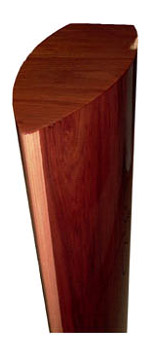 Stefan states that there are several advantages to using the airflow design. First, there is no need for cabinet damping material because air reflections in the cabinet caused by the movement of speaker membranes are controlled and time coherent. The resulting sound is pure and natural. Second, the sound is improved dramatically and is fast and transparent. Third, the transient effect of the speaker membranes is time controlled and the speaker system generates its own mechanical damping factor caused by the cabinet’s shape. Finally, the total weight of the speaker system can be reduced. The cabinet materials of the Conspiracy L incorporate beech plywood materials with seven layers using animal glue to create a rich-tight and natural sound that’s truly daunting. The base plate is made of specially chosen pearwood and equipped with top-of-the-line feet all designed by, the man, Franck Tchang.
Stefan states that there are several advantages to using the airflow design. First, there is no need for cabinet damping material because air reflections in the cabinet caused by the movement of speaker membranes are controlled and time coherent. The resulting sound is pure and natural. Second, the sound is improved dramatically and is fast and transparent. Third, the transient effect of the speaker membranes is time controlled and the speaker system generates its own mechanical damping factor caused by the cabinet’s shape. Finally, the total weight of the speaker system can be reduced. The cabinet materials of the Conspiracy L incorporate beech plywood materials with seven layers using animal glue to create a rich-tight and natural sound that’s truly daunting. The base plate is made of specially chosen pearwood and equipped with top-of-the-line feet all designed by, the man, Franck Tchang.
Stefan, who describes himself as a “perfectionist and extremist when it comes to the reproduction of music”, obsessed over every detail of this three-way full-range system (18 Hz – 35 KHz/-3 dB). He uses only top-quality parts. 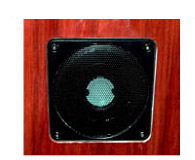 All six drivers use only German Accuton ceramic drivers for the four 7” woofers, one 7” midrange, and one 1.2” tweeter. (A 1.2” pure-diamond tweeter is available as a cool $8000 per pair option). CAE puts a high value on linear impedance behavior, low phase shifting, high efficiency, high impulse linearity, with the lowest possible distortion and most natural sound transformation. All drivers are matched in pairs for equal dB-range (+-0.25dB), impedance, and breakup resonance. The crossover network (at 150 Hz and 2500 Hz) uses only the top-quality crossover parts made by Mundorf Germany. There are high-grade pair/matched premium capacitors, oxygen-free copper-foil coils, and metal oxide resistors. The internal cabling is handmade by Music Link and incorporates a single wire terminal using top WBT-Germany Goldline 5-way binding posts.
All six drivers use only German Accuton ceramic drivers for the four 7” woofers, one 7” midrange, and one 1.2” tweeter. (A 1.2” pure-diamond tweeter is available as a cool $8000 per pair option). CAE puts a high value on linear impedance behavior, low phase shifting, high efficiency, high impulse linearity, with the lowest possible distortion and most natural sound transformation. All drivers are matched in pairs for equal dB-range (+-0.25dB), impedance, and breakup resonance. The crossover network (at 150 Hz and 2500 Hz) uses only the top-quality crossover parts made by Mundorf Germany. There are high-grade pair/matched premium capacitors, oxygen-free copper-foil coils, and metal oxide resistors. The internal cabling is handmade by Music Link and incorporates a single wire terminal using top WBT-Germany Goldline 5-way binding posts.
Enough of the tech talk! Let’s see if they can handle Mozart!
I placed the speakers 9’ apart, 11’ from my listening chair, and back of the speakers were 30” from the front wall. The transducers were toed in slightly in my 17.25’ x 16 x 8 ½’ Manhattan living room. Fortunately, my room is tuned, yes tuned by Franck Tchang himself, with his incredible, must-have acoustic resonators and other goodies. I used the remarkable Virtual Dynamics Revelation cables. The Virtual Dynamics cables sound more organic and musical than other cables that I’ve tried. Also my new reference amplification, the Karan Acoustics KAS 450 amplifier and KAL reference dual-mono preamplifier is just out of this world. I should mention that for the first half of the review, I used the Tact Audio Boz 216 amp and an RCS 2.2X digital amplification.
Right out of the box the speakers sounded impressive; there was a non-mechanical quality, a realistic soundstage, great tonality and powerful deep bass. Overall, the speakers sounded a bit tight and slightly compressed as expected in new speakers. Stefan had told me that the Conspiracy L requires at least 200 hours of break-in. I took his advice and let the system break-in for about a month before doing any serious listening as Fekete had suggested.
I was anxious to listen to the Conspiracy L once it did pass the 200-hour mark. I positioned myself in my listening chair, a favorite java in one hand and my remote control in the other. With 200 watts of Boz power going into the Conspiracy L’s friendly 92 dB (5 Ohm) load it drove beautifully and played relatively loudly. The sound was now more open, smoother, grain-free, and with better bass. I put CD after CD into my Reimyo CDP-777, using it as a transport only with the Tact digital amplification, and the sound was outstanding. However, I noticed something wasn’t quite right. The sound didn’t have the vividness I expected. It didn’t really move me as it should have. Then I realized that I had some personal EQ settings on my Tact RCS 2.2X’s levels a few dB off. After making the adjustment to flat (0 dB across the board) the system improved and became even more open, focused, and dynamic. It just sounded better and came to life. The Conspiracy L is like a monitoring loudspeaker, it’ll reveal any little changes you make to the system making it a great reviewer’s tool as well as a sit-back-and-relax loudspeaker. Also, I strongly recommend exceptional quality front-end components. These are a must as these speakers reveal any weakness in the audio chain’s input signals.
As I spent more time with the Conspiracy L, the sound just got better and better. About halfway into my time with the speakers I had the opportunity to listen to one of the amplifiers that they were voiced with. This was the mighty Karan Acoustics KAS 450. At 450 watts per side, running pure class-A operation and along with their KAL reference dual mono preamplifier, the sound was “amazing.” Franck Tchang’s recommendation of the Karan Acoustics gear was right on the money. I was losing sleep, often staying up until four in the morning. The Conspiracy L’s magic persisted throughout its range, from top to bottom. Day in and day out, it reproduced music with an effortless, open transparency, and resolution that set it apart from all others I’ve heard in my room. 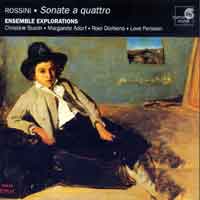 The incredible amount of information the Conspiracy L’s were capable of pulling into the room was difficult to comprehend. On one of my favorites, Rossini’s Sonate a Quattro No.1 in G major with Ensemble Explorations (HMC901776), the Conspiracy L’s overall presentation created a lifelike experience that drew me into to the music and let me forget that I was listening to the electronics and instead made me feel I was listening to a live Ensemble Exploration in my room. The strings had no mechanical quality whatsoever. They sounded organic; like the real thing. The individual instruments were revealed with unusual ease. There was detail, delicacy, body, warmth, and overall transparency which presented the delicate strings with a visceral believability I’d never before experienced. By the way, this incredible work by Rossini, believe it or not, was composed when he was only 12 years old!
The incredible amount of information the Conspiracy L’s were capable of pulling into the room was difficult to comprehend. On one of my favorites, Rossini’s Sonate a Quattro No.1 in G major with Ensemble Explorations (HMC901776), the Conspiracy L’s overall presentation created a lifelike experience that drew me into to the music and let me forget that I was listening to the electronics and instead made me feel I was listening to a live Ensemble Exploration in my room. The strings had no mechanical quality whatsoever. They sounded organic; like the real thing. The individual instruments were revealed with unusual ease. There was detail, delicacy, body, warmth, and overall transparency which presented the delicate strings with a visceral believability I’d never before experienced. By the way, this incredible work by Rossini, believe it or not, was composed when he was only 12 years old!
The Conspiracy L delivered its full-rated low-frequency performance in my room without any apology. It even outperformed my reference Ascendo System Z with Talon’s Thunderbird subwoofer. The Conspiracy L delivered the deepest, tightest, most precise bass I’ve ever heard in my room. Most shocking was the complete lack of excessive mid-bass overhang or any bass sloppiness. The KAS 450 grabbed on to my bass drivers like a pitbull with an astonishing damping factor rated at better than 10,000 (at 8 Ohms, 20Hz-20KHz).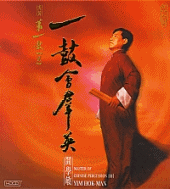 The performance was mind-boggling. There was deep, unbelievable extension, and the four bass drivers came to life. The Conspiracy L’s demonstrated an effortless low-frequency performance and an ability to play loud while maintaining full dynamic expression and composure. Listening to Yim Hok-Man, Master of Chinese Percussion, track 1 “Poem of Chinese Drums”, (Naxos World 76002), the drum’s low-frequency extensions were rendered with thunderous impact, control, and speed that were the best I heard in my room. The Conspiracy L delivered the sounds with the punch and impact of a sledgehammer. The drum whack of Yim Hok-Man had a snap and punch with a control that was simply remarkable.
The performance was mind-boggling. There was deep, unbelievable extension, and the four bass drivers came to life. The Conspiracy L’s demonstrated an effortless low-frequency performance and an ability to play loud while maintaining full dynamic expression and composure. Listening to Yim Hok-Man, Master of Chinese Percussion, track 1 “Poem of Chinese Drums”, (Naxos World 76002), the drum’s low-frequency extensions were rendered with thunderous impact, control, and speed that were the best I heard in my room. The Conspiracy L delivered the sounds with the punch and impact of a sledgehammer. The drum whack of Yim Hok-Man had a snap and punch with a control that was simply remarkable.
The Conspiracy L’s effect on my system’s spatial performance was equally remarkable. The soundstage was wide and deep; my front wall disappeared making the speakers vanish. Not surprisingly the Conspiracy L carved out soundstages the sizes of which were exactly what were on the recording. 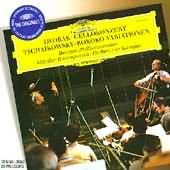
The midrange performance of the Conspiracy L proved awe-inspiring. The longer I listened the more I become involved and appreciated its supremely natural and unforced sound regardless of the type of music. The sheer amounts of information the Conspiracy L’s were capable of producing in my listening room were outstanding. Jacintha has been my personal reference for female vocals.  Listening to Jacintha is her name (GRV1014-2), the Conspiracy L delivered her lush, rich, yet detailed voice in a way that was just incredible. Jacintha’s voice was reproduced with more clarity and transparency but also had more body and solidity. It was as if I was hearing it live for the very first time. A must-have cd piano work, Mozart’sPiano Sonata in C major, K330 (DG B0005827-72), with Lang Lang was a breathtaking experience with the Conspiracy L. Lang Lang’s magical touch on the keyboard exemplifies how Mozart intended his music to be. The sound of the piano was so naturally real. It was reproduced in such a way that it was clear, clean, and transparent; it has to be heard to be believed. The rendering of the piano was extremely detailed, high and low, and the changing of the resonances of the piano’s body were easily discernable as Lang Lang controlled the pedals. The physical images and the velvety solidity of individual notes were spectacular. There was no ringing whatsoever and all the nuances were audible. The Sonata was played delicately, with sensitivity and the immediacy of the piano was realistically rendered in a natural, organic way.
Listening to Jacintha is her name (GRV1014-2), the Conspiracy L delivered her lush, rich, yet detailed voice in a way that was just incredible. Jacintha’s voice was reproduced with more clarity and transparency but also had more body and solidity. It was as if I was hearing it live for the very first time. A must-have cd piano work, Mozart’sPiano Sonata in C major, K330 (DG B0005827-72), with Lang Lang was a breathtaking experience with the Conspiracy L. Lang Lang’s magical touch on the keyboard exemplifies how Mozart intended his music to be. The sound of the piano was so naturally real. It was reproduced in such a way that it was clear, clean, and transparent; it has to be heard to be believed. The rendering of the piano was extremely detailed, high and low, and the changing of the resonances of the piano’s body were easily discernable as Lang Lang controlled the pedals. The physical images and the velvety solidity of individual notes were spectacular. There was no ringing whatsoever and all the nuances were audible. The Sonata was played delicately, with sensitivity and the immediacy of the piano was realistically rendered in a natural, organic way.
The Conspiracy L was free from treble grain, rendering a superbly clean sound with transparency and tons of air. Listening to Paul Motian’s cymbals on Tati (ECM1921), the cymbals were reproduced in a way I’ve never heard before in my system. It was a different experience, actually more like education; it seemed I was learning how cymbals should really sound. The presentation was very natural and sizzled like the real thing rather than sounding artificial. The clarity, transparency permitted the Conspiracy L to reproduce the complexity of the cymbals in a real organic way. The cymbals had life; they had weight, were richly detailed, and the transparency gave new meaning to the music. What was missing was the loss of richness that usually accompanies this sort of transparency and overly defined edges. Such transparency is usually bought at the price of a skeletal, lean sound. There were no such trade-offs with the Conspiracy L; there was simply music. Played over the Conspiracy L, the drums, trumpet, and piano maintained their individuality and separate characters which drew me deeply into the music.
The Consensus Audio Engineering Conspiracy L is an extraordinary loudspeaker in its innovative design and, most importantly its sonic performance. I guess by now, you guys have figured out that the Conspiracy L is not going back to Austria where it was born like the Mozart himself. Until the day I can find a better loudspeaker, the Conspiracy L will be my reference. I plan to have it for a long time to come.
Key Kim
_____________________
Specifications:
Speaker: CONSENSUS CONSPIRACY L
System: 3-way Airflow Damping
Cabinet: Resonance optimized plywood materials
Driver Arrangement: One 2″ Ceramic Tweeter; One 7″ Ceramic Midrange; Four 7″ Ceramic Woofer
Basket spiders & magnets
airflow optimized
(Custom-made by Accuton for CONSENSUS)
Impedance: 5 Ohm
Sensitivity: 92 dB
Recommended Amp Power: 50 – 500 Watt
Frequency Response: 18 Hz – 35 kHz / -3 dB
Single-Wire Terminal
WBT – Germany Goldline: Crossover Parts: Custom-made by Mundorf – Germany
Internal Wire:Handmade by Music Link
Dimensions: (HxWxD) cm 142 x 27,5 x 53cm
Weight: (per piece) 61 kg
Price:$30,000
Contact: Musiclink international
Stefan Fekete
Ferdinand Porsche-Ring 14
A-2700 Wiener Neustadt
AUSTRIA
Phone:+43 2622 20886
Mobile:+43 664 28 39 124
e-mail: musiclink@chello.at
Website: http://www.consensusaudio.com/default.asp
![]()
Don’t forget to bookmark us! (CTRL-SHFT-D)
Stereo Times Masthead
Publisher/Founder
Clement Perry
Editor
Dave Thomas
Senior Editors
Frank Alles, Mike Girardi, Key Kim, Russell Lichter, Terry London, Moreno Mitchell, Paul Szabady, Bill Wells, Mike Wright, Stephen Yan, and Rob Dockery
Current Contributors
David Abramson, Tim Barrall, Dave Allison, Ron Cook, Lewis Dardick, Dan Secula, Don Shaulis, Greg Simmons, Eric Teh, Greg Voth, Richard Willie, Ed Van Winkle, and Rob Dockery
Music Reviewers:
Carlos Sanchez, John Jonczyk, John Sprung and Russell Lichter
Site Management Clement Perry
Ad Designer: Martin Perry





Be the first to comment on: The Consensus Audio Conspiracy Loudspeaker